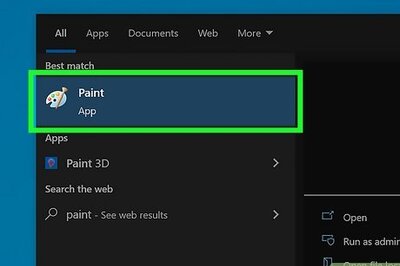
views
A patient is said have hernia, when an internal part of the body pushes through a weakness / defect in the abdominal muscle.
A hernia usually develops between chest and hips. it usually causes no or very few symptoms. The lump can be pushed back in or disappears when patient lies down. Coughing or straining may make the lump appear.
Types
- Inguinal hernias: Inguinal hernias occur when fatty tissue or a part of bowel through groin. It can be seen one side or both sides This is the most common type of hernia and it mainly affects men. it can be seen in all ages.
- Femoral hernias: Femoral hernias also happen when fatty tissue or part of your bowel pokes through into groin – at the top of inner thigh. Less common than inguinal hernias and affect women more.
- Umbilical hernias: Umbilical hernias occur when fatty tissue or part of your bowel protruding through belly button. In babies if the opening in the tummy that the umbilical cord passes through does not seal properly after birth. In Adults because of repeated strain on the tummy – pregnancy & obesity.
Other types
- Incisional hernias – lump develops through previous surgical scar
- Epigastric hernias – where fat tissue pokes between umbilicus and the lower part of your breastbone.
- Diaphragmatic hernias – where organs in your tummy move into your chest through an opening in the diaphragm – developed after injury ; this can also affect babies if their diaphragm hasn’t not developed properly in the womb.
- Hiatus hernias– occur when part of the stomach pushes up into chest, next to esophagus by squeezing through an opening in the diaphragm, Usually seen in adults and elderly. Causes heartburn & vomiting.. Surgery is usually Laparoscopic Fundoplication
- Muscle hernias – where part of the muscle pokes through the tissue; they commonly occur in leg muscles as a result of a sports injury.
Assessment
Doctor will identify a hernia by examining the affected area. Patient is referred for an ultrasound scan to confirmation and assess the extent of the problem. After diagnosis is confirmed, Surgeon will determine whether surgery to repair the hernia is necessary.
For any Symptomatic hernia, at any age, surgery is the only option, done as day care procedure. Benefits and risks of the procedure are discussed in detail before the operation.
Factors considered when deciding whether surgery is appropriate:
The type of hernia – some types of hernia are more likely to become strangulated or cause a bowel obstruction than others the content of your hernia – if the hernia contains a part of your bowel, urinary bladder or, there may be a risk of strangulation or obstruction surgery may be recommended if your symptoms are severe or getting worse, or if the hernia is affecting your ability to carry out your normal activities, Emergency admission if you have a hernia and develop any of the following symptoms:
- Sudden, severe pain in abdomen & hernia site
- Difficulty passing stool or passing wind. Develop repeated vomiting
- hernia becomes firm and painful
These symptoms could mean that either:
A piece of bowel has entered the hernia and become blocked (obstruction)
Blood supply to a section of organ or tissue trapped in the hernia has become cut off (strangulation)
These are Surgical emergencies and need to be operated immediately.
Surgery: All adult hernia repairs usually involve placement of nonabsorbable mesh in
Techniques:
- Open surgery – where a cut is made to push the lump back into the tummy
- Laparoscopy – this is a less invasive, but more difficult, done by experienced surgeons
Read all the Latest Lifestyle News here




















Comments
0 comment